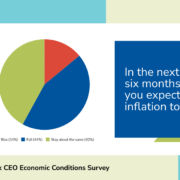From The Fields: Remaining Proactive
 By Jenny Jereczek, Security Financial Bank, Durand
By Jenny Jereczek, Security Financial Bank, Durand
ESG. . . yet another acronym to add to the ag lender’s vocabulary! Environmental, social, and governance (ESG) reporting requirements have been a topic of discussion for several years now, and these discussions continue to gain headwind. Rather than regulatory reporting requirements focusing strictly on financial considerations, investors and regulatory agencies are now considering a broader set of decision-making criteria, which includes ESG ratings. Most recently, bond investors have begun to question ESG ratings for producers who received financing with the bonds the investors are purchasing.
While regulators have not yet standardized ESG reporting, these ratings may have significant impacts on ag banks and their clients. A few things to keep in mind when discussing ESG ratings within your institutions or with your ag clients:
- Currently some ESG frameworks only mandate reporting of emissions and energy consumption. Going forward, financial performance and ESG ratings may also be impacted by the following:
- Changes in water availability, sourcing, and quality
- Tillage practices and their impact on soil health
- Use of chemicals, fertilizers, and solid waste disposal
- Consumer groups continue to use ESG ratings to pressure companies along with lenders to be “green” even though metrics to determine what “green” really means have not be identified or standardized.
- Often the focus of agriculture’s environmental impact is negative, focusing on things such as risks from deforestation, pesticide usage, fertilization application rates, animal welfare, and manure disposal. Yet the agricultural sector can also have a positive environmental impact, such as the creation of alternative fuels — as we have seen with ethanol and biodiesel production as a means reduce the total consumption of fossil fuels. Education and communication with the consumer should be a primary focus for producers, lenders, and all that partner with the agricultural community. The American public cannot support what it does not understand.
- Most producers are already deeply committed to improving sustainability as well as using technology to reduce inputs and costs. With fertile land availability outpacing demand and freshwater needs exceeding supply, the importance of sustainability should not be driven solely by reactions to investor attitudes, but more so from a place of improving efficiency and profitability to ensure longevity of the operation.
- ESG ratings are driven by governmental entities — therefore without clear objective standards — and ESG regulations within the looming 2023 farm bill or federal financial regulations could be of concern and could affect farm bill and federal crop insurance payments.
While the impacts of ESG ratings are not totally known today, we can be certain that there will be impacts to our producers and our institutions. As lenders, we need to keep up with developments regarding potential legislation surrounding ESG ratings. We also need to encourage education amongst not only consumer groups but our producers to be proactive in our approach to dealing with future ESG requirements.
Jenny Jereczek is market president and director – ag banking with Security Financial Bank in Durand. Jereczek currently serves on the WBA Ag Section Board of Directors.









